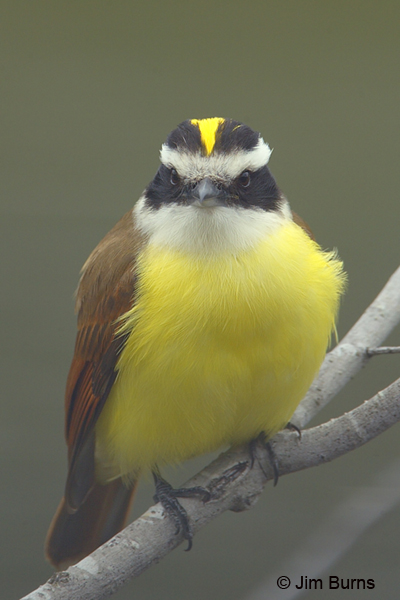
The LRGV is a special place on the birding map for much the same reason as southeast Arizona. Many Latin American species reach the northern apogee of their breeding range there. The LRGV is Mexico without crossing the border. With wings and without legal and philosophical debate, birds cross that border, the Rio Grande River, at will. That's the beauty and excitement of birding in south Texas.
Flip through your field guide, look at the distribution maps, and start counting. I come up with over thirty species you haven't seen if you haven't been to the LRGV. And there's something for every birding taste, from raptor aficionado (hook-billed kite) to nightbird seeker (common paraque), from hummingbird lover (buff-bellied) to kingfisher fancier (ringed), from the wildly exotic (red-crowned parrot) to the wildly noisy (great kiskadee), from those that find you (plain chachalaca) to those you have to really dig out (clay-colored robin). There are the beautiful (altamira oriole) and the ugly (groove-billed ani), the colorful (green jay) and the drab (olive sparrow), the reintroduced icon (aplomado falcon) and one even the scientists don't know much about (white-collared seedeater).
Harlingen (Southwest) and McAllen (Continental) are short airline flights from Phoenix. Because the revised edition of A Birder's Guide to the Rio Grande Valley of Texas won't be available from the American Birding Association until March (1-800-634-7736), all you really need is the Rio Grande Valley Birding & Butterfly Map (www.valleychamber.com or 956-968-3131). The LRGV runs from Zapata to the gulf, and this map spotlights 94 sites. Let me cut to the chase for you.
If you have a long weekend, you need to spend one whole day at each of three places, Bentsen State Park and Santa Ana and Laguna Atascosa National Wildlife refuges. If you have a week, add Salineno Tract, Weslaco Thicket, Estero Llano Grande Lake, Sabal Palm Audubon Sanctuary, and South Padre Island to your itinerary. These lesser jewels are strung along the length of the river, but half a day will give you the flavor of each site and several new birds.
Winter through spring migration and breeding is the best time. Summer is not recommended because birds don't like the heat and humidity any more than you do. The LRGV is certainly not as scenic as southeast Arizona and the habitat is less varied, but birding at the hotspots is probably better and more predictable, the sites more user friendly and less isolated. Once you've done southeast Arizona, the LRGV should be your first out-of-state trip. Go and enjoy, and here's betting you can't go just once.